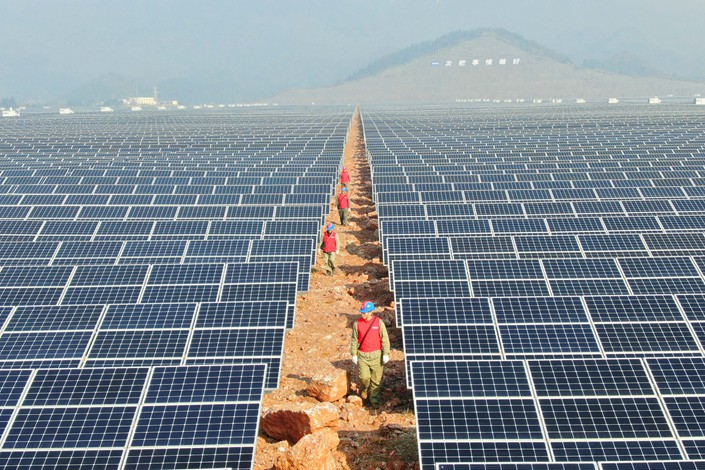Solar Power Prepares to Go Head-to-Head With Coal

After thriving for years on state support, China’s solar generators should be ready to slug it out with other power sources in a competitive market, according to the latest government mandate, as night falls on the earlier era of heavy subsidies.
China turbocharged its solar technology, also called photovoltaic, for much of the last decade by offering solar plants generous prices for their power, guaranteeing attractive returns for investors. But for the last year the government has hinted it will reduce its role as it struggles to pay the artificially high prices it set and solar technology has become cheaper.
In the latest step to wean the sector from state support, solar plants will no longer sell electricity to the grid at a fixed price starting July 1, according to the National Development and Reform Commission (NDRC), China’s economic planner. Instead, such plants will compete against each other in a bidding system designed to win the grid operator the lowest rates, according to a notice (link in Chinese) published this week.
The notice does not scrap the tariffs entirely, since a “guidance” price will serve as an upper limit for all negotiated prices based on the region where the project is located. The guidance price in zone 1, which includes most of northern China, is 0.40 yuan ($0.06) per kilowatt hour (kWh); for zone 2, which is mostly western and central China, it’s 0.45 yuan per kWh; and for zone 3, which covers remaining regions such in more costly areas such as Guangdong and the east coast, it’s 0.55 yuan per kWh.
The guidance prices are substantially lower than benchmark prices for 2018, which were 20%, 25% and 21% higher for the three zones, respectively.
Read More
Why Outside Investors Aren't Energized by China's Power Grid
The new bidding system considers that electricity-generation costs are falling across the industry and solar is becoming far more competitive, a researcher from the NDRC’s China National Renewable Energy Center told Caixin. In April the NDRC announced that several new nuclear projects will receive lower-than-expected tariffs, a move also driven by reductions in electricity costs partly thanks to the easing of bottlenecks in power sales between provinces.
But if prices for solar power in particular regions are still higher than the benchmark coal price for that area, solar projects will still receive state subsidies, according to the latest NDRC notice.
State Grid Corp. of China, which controls roughly 88% of China’s power grid, has also been under pressure to make its electricity pricing system more transparent, which experts say will benefit generators of renewable energy over entrenched coal interests. The grid’s growing network of ultra-high voltage transmission lines is also helping to ensure less waste of electricity generated by solar in China’s renewable-rich western regions.
Contact reporter David Kirton (davidkirton@caixin.com)

- 1Alibaba to Launch Agentic AI Sourcing Tool for Businesses as European Orders Soar
- 2Top Sovereign Lending Official at Exim Bank Under Investigation
- 3Chinese Banks Slash Loan Rates in Year-End Push, Raising Risk Concerns
- 4Huawei Unveils Two New Smart-Vehicle Brands With GAC and Dongfeng
- 5In Depth: China’s Steelmakers Look Abroad as Domestic Pressures Mount
- 1Power To The People: Pintec Serves A Booming Consumer Class
- 2Largest hotel group in Europe accepts UnionPay
- 3UnionPay mobile QuickPass debuts in Hong Kong
- 4UnionPay International launches premium catering privilege U Dining Collection
- 5UnionPay International’s U Plan has covered over 1600 stores overseas



